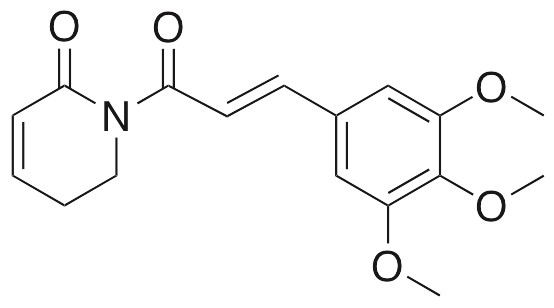Description
Piperlongumine is found in several species of the Piper plant and displays many beneficial characteristics, including antithrombotic, anti-inflammatory, anti-atherosclerotic, and chemotherapeutic activities. Piperlongumine directly inhibits thromboxane A2 (TxA2) receptors, inhibiting platelet aggregation in vivo. Piperlongumine also decreases NF-κB activation and inhibits PDGFR signaling in vivo, inhibiting cell migration and decreasing atherosclerotic plaque formation. In a cellular model of prostate cancer, piperlongumine inhibits NF-κB activity and decreases expression of IL-6, IL-8, MMP9, and ICAM-1, decreasing cell invasion and growth; in a separate study using a similar model, this compound prevents transcription of androgen receptors, decreasing androgen receptor protein levels. In several other cellular models of cancer (including glioblastoma multiforme and colon cancer), piperlongumine inhibits the ubiquitin-proteasome system, likely at a pre-proteasomal stage, increasing reactive oxygen species (ROS) and stimulating activation of p38, resulting in autophagy and cell death. It is a novel CRM1 inhibitor.
